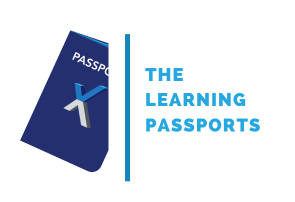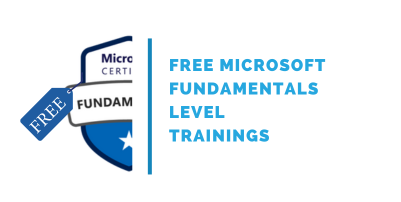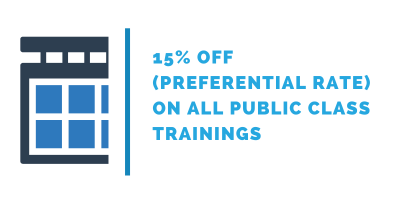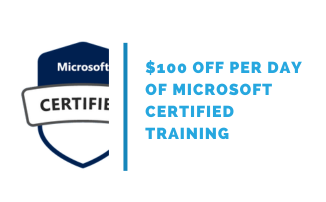
Microsoft Certified: Windows Virtual Desktop Specialty (AZ140)

The AZ-140 certification, focusing on Configuring and Operating Microsoft Azure Virtual Desktop, stands as a pivotal course for professionals aiming to master the intricacies of managing and operating Azure Virtual Desktop solutions within the Microsoft Azure environment. This certification validates an individual's expertise in configuring and managing Azure Virtual Desktop infrastructure.
You will learn how to plan, deliver, and manage virtual desktop experiences and remote apps, for any Azure device, through a mix of demonstrations and hands-on lab experiences deploying virtual desktop experiences and apps on Windows Virtual Desktop and optimizing them to run in multi-session virtual environments.
This training is a comprehensive preparation for the AZ-140: Configuring and Operating Windows Virtual Desktop on Microsoft Azure exam to earn the Microsoft Certified: Windows Virtual Desktop Specialty certification.

Public class
2495$
Duration:
4 days / 28 hours
Private class
Virtual classroom
Minimum no. of participants: 5
4 days / 28 hours
Price on request
English or French
Training plan:
Configuring and Operating Microsoft Azure Virtual Desktop (AZ-140T00)
Module 1: Azure Virtual Desktop Architecture
- Azure Virtual Desktop for the enterprise
- Azure Virtual Desktop components
- Personal and pooled desktops
- Service updates for Azure Virtual Desktop desktops
- Azure limitations for Azure Virtual Desktop
- Virtual machine sizing for Azure Virtual Desktop
- Azure Virtual Desktop pricing
Module 2: Design the Azure Virtual Desktop architecture
- Assess network capacity and speed requirements for Azure Virtual Desktop
- Azure Virtual Desktop Experience Estimator
- Recommend an operating system for an Azure Virtual Desktop implementation
- Balancing host pools
- Recommendations for using subscriptions and management groups
- Configure a location for the Azure Virtual Desktop metadata
- Recommend a configuration for performance requirements
Module 3: Design for user identities and profiles
- Select an appropriate licensing model for Azure Virtual Desktop based on requirements
- Personal and multi-session desktop scenarios
- Recommend an appropriate storage solution
- Plan for a desktop client deployment
- Plan for Azure Virtual Desktop client deployment - Remote Desktop Protocol (RDP)
- Windows Desktop client to multiple devices
- Hybrid Identity with Microsoft Entra ID
- Plan for Microsoft Entra Connect for user identities
Module 4: Implement and manage networking for Azure Virtual Desktop
- Implement Azure virtual network connectivity
- Manage connectivity to the internet and on-premises networks
- Understanding Azure Virtual Desktop network connectivity
- Implement and manage network security for Azure Virtual Desktop
- Configure Azure Virtual Desktop session hosts using Azure Bastion
- Monitor and troubleshoot network connectivity for Azure Virtual Desktop
- Plan and implement Remote Desktop Protocol Shortpath
- Configure Remote Desktop Protocol Shortpath for managed networks
- Configure Windows Defender Firewall with Advanced Security for RDP Shortpath
- Plan and implement Quality of Service for Azure Virtual Desktop
Module 5: Implement and manage storage for Azure Virtual Desktop
- Storage for FSLogix components
- Configure storage for FSLogix components
- Configure storage accounts
- Create file shares
- Configure disks
Module 6: Create and configure host pools and session hosts for Azure Virtual Desktop
- Automate creation of an Azure Virtual Desktop host pool using PowerShell
- Configure host pool assignment type
- Customize Remote Desktop Protocol (RDP) properties for a host pool
- Manage licensing for session hosts that run Windows client
- Deploying Azure AD-joined virtual machines in Azure Virtual Desktop
Module 7: Create and manage session host image for Azure Virtual Desktop
- Create a managed virtual machine (VM) image
- Modify a session host image
- Plan for image update and management
- Create and use an Azure Compute Gallery using the portal
- Create an Azure Virtual Desktop image by using VM Image Builder
- Install Microsoft 365 Apps on a master Virtual Hard Disk image
- Deploying Microsoft Entra joined virtual machines in Azure Virtual Desktop
Module 8: Manage access for Azure Virtual Desktop
- Role-based access control (RBAC) for Azure Virtual Desktop
- Plan and implement Azure roles and role-based access control (RBAC) for Azure Virtual Desktop
- Using Azure Virtual Desktop with Microsoft Intune
- Configuring screen capture protection for Azure Virtual Desktop
Module 9: Manage security for Azure Virtual Desktop
- Plan and implement Conditional Access policies for connections to Azure Virtual Desktop
- Plan and implement multifactor authentication (MFA) in Azure Virtual Desktop
- Understand Conditional Access policy components
- Manage security by using Azure Security Center
- Security posture management and threat protection
Module 10: Implement and manage FSLogix
- Plan for FSLogix
- FSLogix profile containers and Azure files
- Install FSLogix
- Storage options for FSLogix profile containers
- Profile Container vs Office Container
- Configure Office Containers
- Installing Microsoft Office using FSLogix application containers
- Configure Cloud Cache
- Configure Profile Containers
- Create a profile container with Azure NetApp Files and capacity pool
- Manage Rule Sets and application masking
Module 11: Configure user experience settings
- Virtual desktop optimization principles
- Persistent virtual desktop environments
- Configure user settings through group policies
- Configure user settings through Endpoint Manager policies
- Configure session timeout properties
- Configure device redirections
- Configure Universal Print
- Implement the Start Virtual Machine on Connect feature
- Troubleshoot user profile issues
- Troubleshoot Azure Virtual Desktop clients
Module 12: Install and configure apps on a session host
- MSIX app attach
- How MSIX app attach works
- Set up a file share for MSIX app attach
- Upload MSIX images to Azure NetApp Files in Azure Virtual Desktop
- How to configure apps for users
- Using the OneDrive sync app on virtual desktops
- Using Microsoft Teams on Azure Virtual desktop
- Publish built-in apps in Azure Virtual Desktop
- Troubleshoot application issues for Azure Virtual Desktop
Module 13: Plan for disaster recovery
- Disaster recovery for Azure Virtual Desktop
- Virtual machine replication
- FSLogix configuration
Module 14: Automate Azure Virtual Desktop management tasks
- Scale session hosts using Azure Automation
- Create or update an Azure Automation account
- Create an Azure Automation Run As account
- Create the Azure Logic App and execution schedule
Module 15: Monitor and manage performance and health
- Monitor Azure Virtual Desktop by using Azure Monitor
- Log Analytics workspace for Azure Monitor
- Monitor Azure Virtual Desktop by using Azure Advisor
- How to resolve Azure Advisor recommendations
- Diagnose graphics performance issues
Exclusives:
- One FREE attendance to the Microsoft Certified: Security, Compliance, and Identity Fundamentals (SC900) training - $695 value!
- One voucher to take the exam - $225 value!
- One year access to the class recording
- 180 days access to the lab environment after class
- Up to date courseware with Microsoft Learn
- Microsoft course achievement badge
Credentials information:
Exam Characteristics
- Exam code: AZ-140
- Exam Title: Configuring and Operating Microsoft Azure Virtual Desktop
- Exam Duration: 100 minutes
- Number of Questions: 40 to 60
- Question Format: Multiple-choice, multiple-answer, scenario-based
- Passing Score: 700 out of 1000
- Cost: $0 (included in your training)
Exam Topics
- Plan and implement an Azure Virtual Desktop infrastructure
- Plan and implement identity and security
- Plan and implement user environments and apps
- Monitor and maintain an Azure Virtual Desktop infrastructure
- All details...
Follow-on trainings:
Audiences:
Understanding the AZ-140 Certification
The AZ-140 certification revolves around an in-depth understanding of Azure Virtual Desktop, covering various aspects of configuration, deployment, management, and optimization within the Azure environment. It emphasizes the deployment of virtualized desktop infrastructure using Azure services, ensuring secure and efficient operations.
AZ-140 Exam Overview
The AZ-140 exam assesses candidates' proficiency in multiple domains, including deploying and managing Azure Virtual Desktop infrastructure, implementing security and compliance measures, configuring user settings, optimizing user experience, and ensuring high availability and disaster recovery solutions.
Preparation for the AZ-140 Exam
Effective preparation for the AZ-140 exam involves utilizing official learning paths, study guides, and specialized training courses offered by Microsoft. Hands-on experience in configuring Azure Virtual Desktop environments, implementing security measures, and managing user settings is crucial for a comprehensive understanding.
Career Prospects with AZ-140 Certification
Achieving the AZ-140 certification significantly enhances career prospects, particularly for roles such as Azure Virtual Desktop Administrators or Cloud Solution Architects specializing in virtual desktop infrastructure. As organizations increasingly adopt remote work solutions, certified professionals in this domain are highly sought after.
Conclusion
The AZ-140 Configuring and Operating Microsoft Azure Virtual Desktop course and certification validates an individual's proficiency in deploying and managing Azure Virtual Desktop solutions effectively. Proficiency in configuring, securing, and optimizing virtual desktop infrastructure contributes to enhanced operational efficiency and better user experiences.
By diligently preparing and gaining practical experience with Azure Virtual Desktop configurations, candidates can not only pass the AZ-140 exam but also position themselves as skilled Azure Virtual Desktop administrators, driving innovation and productivity in their organizations.
Frequently Asked Questions (FAQs) about AZ-140
What is AZ-140?
AZ-140 refers to the Microsoft certification exam with the code AZ-140, titled " Configuring and Operating Microsoft Azure Virtual Desktop." This certification focuses on assessing an individual's ability to configure, deploy, and manage Windows Virtual Desktop environments on the Microsoft Azure platform.
Is AZ-140 worth it?
Whether AZ-140 is worth pursuing depends on your career goals and the relevance of Windows Virtual Desktop in your professional role. If you work with or plan to work with Windows Virtual Desktop on Microsoft Azure, obtaining the AZ-140 certification can validate your skills and enhance your credibility in deploying and managing virtual desktop solutions.
How do I prepare for AZ-140?
To prepare for the AZ-140 exam, consider the following steps:
- Review Exam Objectives: Familiarize yourself with the official exam objectives provided by Microsoft. These objectives outline the topics and skills that the exam will assess.
- Training Resources: Use Microsoft's official documentation, official courses such as this one provided by Eccentrix, and other training resources specifically designed for AZ-140 preparation.
- Hands-On Practice: Gain practical experience by working with Windows Virtual Desktop on Azure. Set up virtual desktop environments, configure settings, and troubleshoot common issues.
- Practice Tests: Take practice exams to assess your knowledge and identify areas where you may need additional study.
- Community Forums: Engage with the community on forums and discussion boards to share experiences, ask questions, and learn from others who have already taken the AZ-140 exam.
- Official Documentation: Refer to Microsoft's official documentation for Windows Virtual Desktop and related Azure services for in-depth understanding and reference.
What is the difference between an Azure Administrator and a Microsoft Windows Virtual Desktop Specialist?
An Azure administrator focuses on the broader management of an Azure tenant. It deploys virtual systems, but also takes care of the network, storage, as well as the maintenance and optimization of the ecosystem in general. A Microsoft Windows Virtual Desktop specialist targets roles related to remote access and virtualization scenarios for virtual computers. The AZ-104 training educates participants on how they can manage the Azure tenant with examples of daily tasks.
Contact us for more information on pricing::
Eccentrix
Office: 1-888-718-9732
E-mail: info@eccentrix.ca
130, King Street West, Suite 1800
Toronto, Ontario M5X 1E3
www.eccentrix.ca








